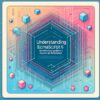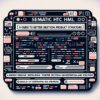Understanding the WordPress Loop for Dynamic Content Display

Hello there! If you ever wondered how exactly WordPress gets those blog posts from your latest cooking adventure or the last tech review you wrote onto your webpage, you’ve come to the right place! Today, we shall unravel the magic behind the scenes. Get cosy and grab a cup of coffee (or tea, no judgment here!) as we dive into understanding the WordPress Loop for Dynamic Content Display. Don’t worry if the term sounds like something out of a sci-fi thriller. By the time you finish this chapter, you’ll be on a first-name basis with it!
So, What Is This WordPress Loop?
Imagine you have a magic hat, and each time you dive your hand in, you pull out an exciting new blog post. Sounds fun, isn’t it? Unfortunately, magic hats don’t exist (but wouldn’t that be fun?), but the WordPress Loop comes pretty darn close!
In essence, the WordPress Loop is the powerful PHP function that WordPress uses to display your posts. It retrieves posts from your database and displays them on your blog, one after the other – making it your virtual magic hat.
Getting into The Loop
Think of the Loop as a programming ‘while’ loop. As long as there are posts in it, it keeps spinning and pulling them out. Once it’s done showing all posts, it rightly stops. It’s like a well-behaved child – keeps going until you tell it not to.
Here’s an oversimplified way the Loop might look:
Let’s break down what’s happening here.
– ‘have_posts()’ checks if there are posts left in the queue. It’s the gatekeeper that only allows the loop to keep running if there are more posts to be displayed.
– ‘the_post()’ then takes the next post off the pile to display it.
This process continues until ‘have_posts()’ can’t find any more posts. Then, like turning off your favorite Netflix series at 2 a.m., it’s time to stop!
Diving Deeper into The Loop’s Anatomy
Now, that’s a draft sketch of the Loop. Let’s bring in a a bit more character to it with more functions.
In this code,
– ;the_title();> fetches and displays the title of your post.
– ;the_excerpt();> grabs that catchy little summary or excerpt from your post to display it.
Voila! Aren’t you glad you dived deeper?
Conclusion
So, that’s it! You’ve unlocked the secret of the WordPress Loop for Dynamic Content Display. Of course, there’s a lot more you can do with the Loop. You can customize it to display content in different ways and alter how many posts you want to show or how they’re sorted. But for now, this basic understanding will get you pretty far in your journey as a web developer!
And remember, in the world of coding, there’s always something new to learn, a challenge to overcome, and a loop to…well, loop! So, hold on tight to your magic hat and let’s keep Coding On!
Next up, we’ll be opening up the Pandora’s box of HTML tags. But until then, remember, friends don’t let friends code alone. So, share your new-found knowledge with a buddy! Happy coding!


